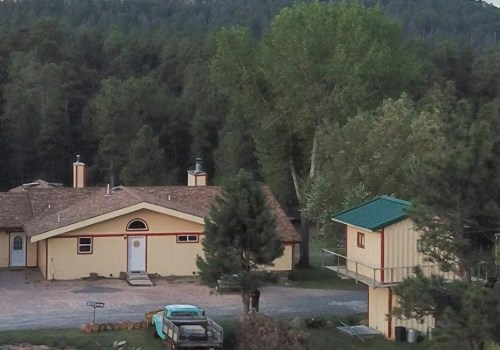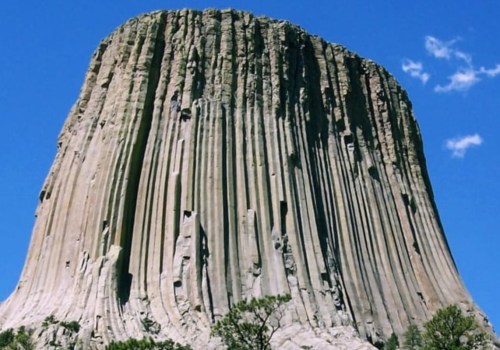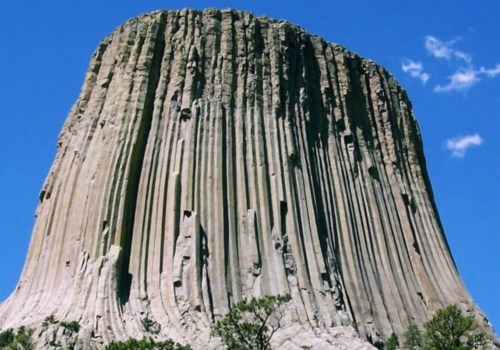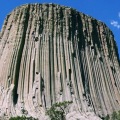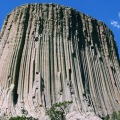The Devil's Tower is an ancient formation located in Wyoming, United States. It stands 867 feet (264 meters) high measured from its base and 386 meters (1267 feet) measured from the river valley; its summit has an elevation of 5,112 feet (1558 meters) above sea level. The tower has a flat top that covers 1.5 acres (0.6 hectares) and ribbed sides, and its color is mainly light gray and beige. Lichens cover parts of the tower and sage, moss and grass grow on top of it.
Squirrels and birds live at the top, and a pine forest covers part of the surrounding country; there is also an important prairie dog village near the base of the tower. Other popular names for the Devil's Tower are Grey Horn Butte, Ghost Mountain, and Mythic-Owl Mountain. For a long time it was thought that the Devil's Tower was an ancient volcano or at least formed by one that was now inactive. It is now believed that the formation was created when molten rock, which was pushed upwards, met with a layer of hard rock and was forced to spread out in the form of a flat top.
The Devil's Tower was the first national monument in the United States, established on September 24, 1906 by President Theodore Roosevelt. The original proclamation inadvertently omitted the punctuation of the word “Devil's”, so the name Devils Tower became official. From here, you can continue driving to Devils Tower or take one of the few trails, such as the Valley View Trail, the South Side Trail, and the Red Beds Trail. Most geologists believe that Devils Tower formed in a place where magma in the Earth's mantle emerged between masses of sedimentary rock.
Because the Tower is made up of several columns, many of which vary in size and height, some points in the Devil's Tower are approximately 600 feet high and 10 to 20 feet wide. It is estimated that about 5000 people climb here every year, so it can be safely said that the Devil's Tower is not a tower of death. Many Native American tribes have long held spiritual beliefs about this formation. They still use it for various formal occasions, prayer offerings, periods of sweating, vision missions and community meetings.
Since the first unsuccessful ascent of German-American mountaineer Fritz Wiesner in 1893, the Devil's Tower has been a popular climbing destination for experienced climbers from all over the world. Opponents of the name change say Devils Tower is one of the National Park Service's most historically known names and sites and that the name should remain. The Devil's Tower is an incredible formation with a fascinating history that should be preserved for future generations to enjoy.
